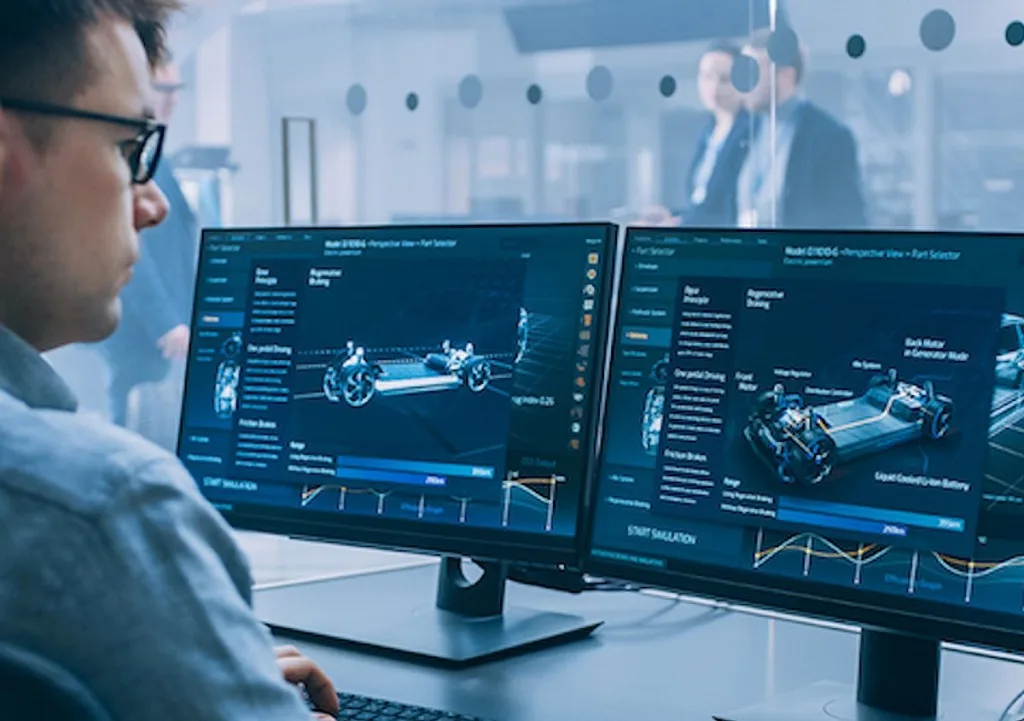
Digital Twins That Monitor Your Health
In the dynamic world of healthcare technology, digital twins are emerging as a transformative tool for personal health monitoring. Originating from the concept of creating a digital replica of physical entities, digital twins have evolved to encapsulate human physiology, enabling real-time health monitoring and personalized medical interventions. This technology, which initially found its footing in industrial applications, is now making significant strides in healthcare, promising to revolutionize how we understand and manage our health.
What is Digital Twin Technology and When Did It Appear?
Digital twin technology involves creating a virtual replica of a physical object or system. The concept was first introduced by Michael Grieves in 2002 during a presentation on product lifecycle management at the University of Michigan. It gained momentum in the manufacturing sector, where it was used to simulate, predict, and optimize processes. However, it wasn’t until the advent of advanced data analytics, IoT, and AI that digital twins could be effectively applied to more complex and dynamic systems like human health.
The integration of digital twins into healthcare began in earnest in the late 2010s, with researchers exploring how these virtual models could simulate human organs and predict disease progression. By 2020, significant advancements had been made, allowing for the creation of comprehensive digital health models that can provide continuous monitoring and insights into an individual’s health status. This marked the beginning of a new era in personalized medicine, where real-time data and predictive analytics play a crucial role in disease prevention and management.
How Digital Twin Technology Works and Is Structured
The architecture of digital twin technology in healthcare consists of several critical components. At its core is the data collection module, which gathers real-time data from various sources such as wearable devices, electronic health records, and genetic information. This data is then fed into advanced analytics platforms equipped with AI and machine learning algorithms. These platforms process the data to create a dynamic and real-time digital representation of an individual’s physiological state.
Once the digital twin is created, it continuously updates with new data, reflecting the current health status of the individual. This model can simulate various scenarios, predict potential health issues, and provide personalized recommendations for lifestyle changes or medical interventions. The feedback loop between the physical entity (the patient) and the digital twin ensures that the model remains accurate and relevant, offering a proactive approach to health management. This continuous interaction enables healthcare providers to anticipate medical conditions before they become critical, ensuring timely and targeted interventions.
Where Digital Twin Technology is Used
Digital twin technology has found applications across various sectors of healthcare. One prominent use case is in chronic disease management, where continuous monitoring and predictive analytics are crucial. For instance, patients with diabetes can benefit from a digital twin that tracks blood glucose levels, dietary habits, and physical activity to provide personalized management plans and early warnings of potential complications. Similarly, digital twins are used in cardiology to monitor heart health, predict arrhythmias, and optimize treatment plans based on real-time data.
How Digital Twin Technology Has Performed
The implementation of digital twins in healthcare has shown promising results. Clinical studies have demonstrated that digital twins can significantly improve patient outcomes by enabling more precise and timely interventions. In a recent study involving patients with heart failure, the use of digital twins resulted in a 30% reduction in hospital readmissions, highlighting the technology’s potential to enhance patient care and reduce healthcare costs. Furthermore, digital twins have been instrumental in advancing personalized medicine by providing insights tailored to the unique physiological characteristics of each patient.
In addition to improving patient outcomes, digital twins have also streamlined clinical workflows. By providing real-time data and predictive insights, they help healthcare providers make informed decisions quickly, reducing the time needed for diagnosis and treatment planning. This efficiency not only benefits patients but also alleviates the burden on healthcare systems, making it possible to deliver high-quality care to more patients.
Another notable achievement of digital twin technology is its role in medical research and development. Researchers can use digital twins to simulate clinical trials, exploring the effects of new treatments and medications on virtual patients be fore proceeding to human trials. This approach accelerates the R&D process and reduces the risks associated with traditional clinical trials, potentially bringing new treatments to market faster.
Despite these successes, the technology is not without challenges. Ensuring data privacy and security remains a paramount concern, as digital twins rely on vast amounts of personal health data. Moreover, integrating digital twins into existing healthcare infrastructure requires significant investment and collaboration between various stakeholders. However, the potential benefits far outweigh these challenges, driving ongoing efforts to refine and expand the use of digital twins in healthcare.

Potential Future Applications of Digital Twin Technology
Looking ahead, the potential applications of digital twin technology in healthcare are vast. One promising area is in predictive maintenance of health, where digital twins could forecast potential health issues based on lifestyle and genetic predispositions. For instance, a digital twin could predict the likelihood of developing conditions such as hypertension or arthritis, allowing for early interventions and lifestyle adjustments to mitigate these risks.
Another future application lies in mental health management. Digital twins could be used to monitor and predict mental health conditions, providing real-time insights into stress levels, sleep patterns, and emotional well-being. This information could be invaluable for mental health professionals in developing personalized treatment plans and providing timely support to individuals in need.
Moreover, digital twins could play a crucial role in enhancing telemedicine services. By providing a comprehensive and continuously updated digital representation of a patient’s health, digital twins enable healthcare providers to offer more accurate remote consultations and treatment recommendations. This could significantly improve access to quality healthcare, particularly in remote or underserved areas, making healthcare more equitable and efficient.
